
- Home
- Photography Tours
- Diary / Blog
- Galleries
- Foreign Trips
- Tasmania 2016
- NE Queensland 2016
- Western Alps 2016
- NE Spain 2016
- Australia's Wet Tropics 2015
- Australia's Top End 2015
- SW Australia 2015
- Switzerland 2015
- Andalucia 2015
- Belize 2015
- Australia 2014
- Switzerland 2014
- Belize 2014
- Bahama Islands 2014
- Switzerland 2013
- Ecuador 2012-2013
- Florida 2011-2012
- Vancouver Island 2011
- Australia 2010
- Peru 2008
- Bulgaria 2007
- Lesvos 2006
- California 2006
- New Zealand 2005
- Extremadura 2005
- Goa, India 2004
- The Gambia 2003
- About
September 2014
20th-26th September 2014
Lammington National Park, Queensland, Australia
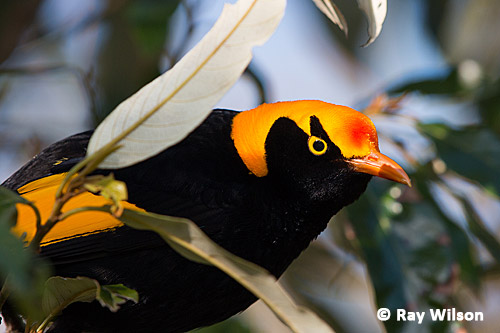
Regent Bowerbird (Sericulus chrysocephalus)
My luck with the weather totally ran out soon after my arrival at Lammington. The clouds closed in, and it soon started raining. Unfortunately that was to be the pattern for almost the entire 6 days I spent on the mountain top, with only the occasional spell of bright, dry weather.
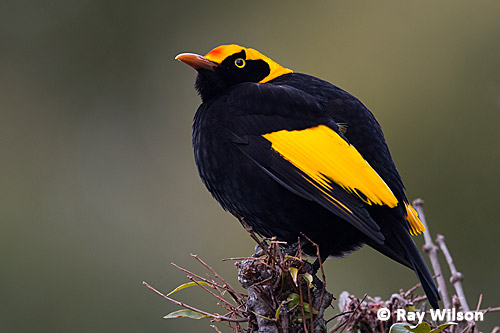
Regent Bowerbird (Sericulus chrysocephalus)
Despite the poor weather, finding Lammington's special birds was not too difficult. Regent Bowerbirds were numerous around the entrance to the national park and it wasn't unusual to find about a dozen of these spectacular birds hanging around in the trees.

female/immature male Regent Bowerbird (Sericulus chrysocephalus)
Satin Bowerbirds were also common here, especially around the picnic tables.
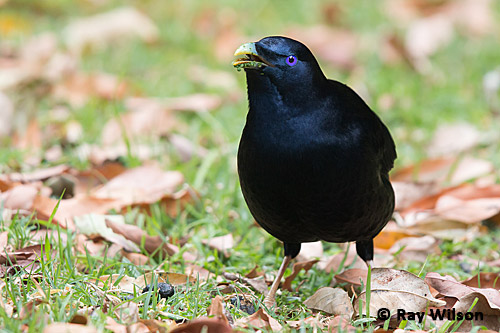
Satin Bowerbird (Chlamydera violaceus)
Deep in the forest, I followed a gorgeous Noisy Pitta for over an hour as it quietly bounced around in the undergrowth, often standing motionless for long periods of time.
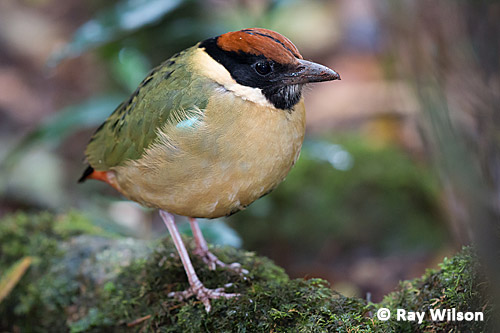
Noisy Pitta (Pitta versicolor)
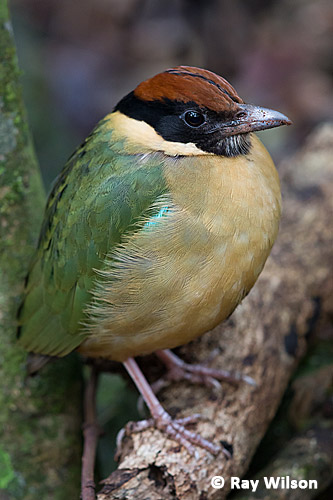
Noisy Pitta (Pitta versicolor) |
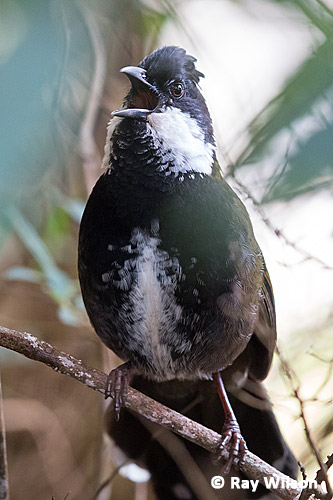
Eastern Whipbird (Psophodes olivaceus) |
Eastern Whipbirds are very common all along the east coast, but they are not the easiest of birds to see. Like almost all of the members of its family, they prefer to keep to dense undergrowth and it is usually only their distinctive, whipcrack call that alerts you to their presence.
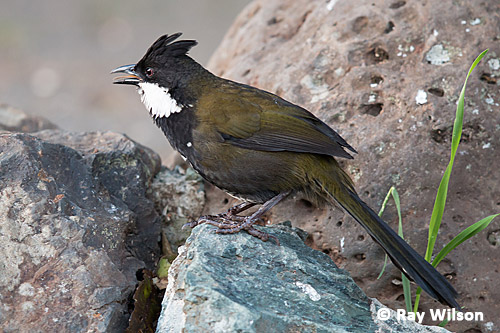
Eastern Whipbird (Psophodes olivaceus)
The bird that most people want to see during a visit to Lammington, however, is the Albert's Lyrebird. This rare, large, ground-dwelling bird has a very restricted range and is endemic to a small area of subtropical rainforest on the border of Queensland and New South Wales with a population estimated to be around 3500 breeding birds.
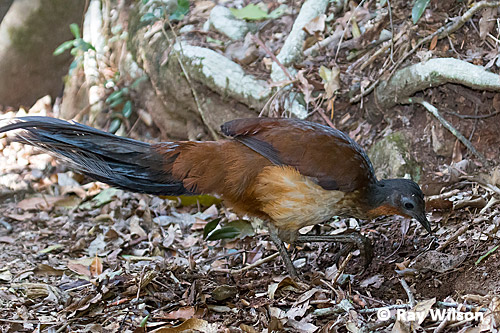
Albert's Lyrebird (Menura alberti)
Lyrebirds forage for their invertebrate prey by scratching around in the leaf litter, often digging into the surface soil to uncover tasty morsels. When actively foraging, they are often closely accompanied by scrubwrens who opportunistically prey on small invertbrates disturbed by the lyrebird's digging. Sometimes they get a bit too close and on several occasions I saw one get hit by a shower of soil and leaves kicked up by the lyrebird.
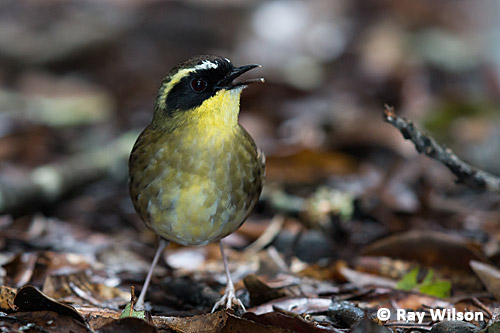
Yellow-throated Scrubwren (Sericornis citreogularis)
Another, more common, ground-dwelling bird that scrubwrens follow around as they scratch around in the leaf litter in search of invertebrates is the Logrunner. These thrush-sized birds have a quite amusing digging action, splaying their legs out sideways, perpendicular from their bodies.
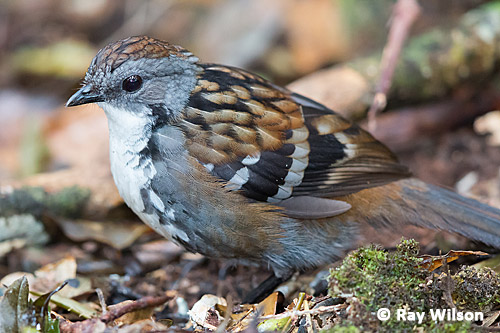
Australian Logrunner (Orthonyx temminckii)

Red-necked Pademelon (Thylogale thetis)
Red-necked Pademelons are commonly seen around the lodge and the car park, especially in the early mornings and late evening.
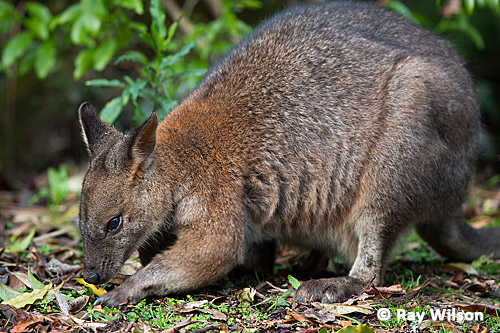
Red-necked Pademelon (Thylogale thetis)
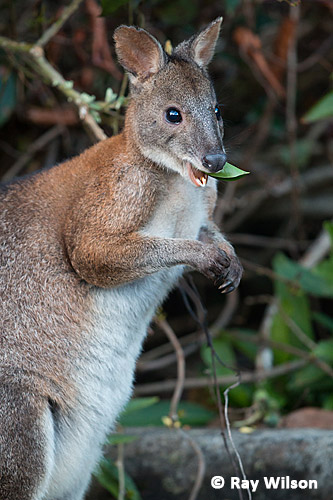
Red-necked Pademelon (Thylogale thetis) |
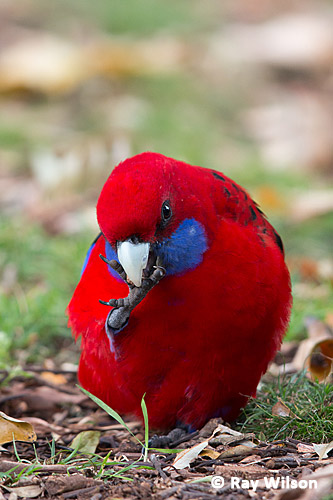
Crimson Rosella (Platycercus elegans) |
There is a bird-feeding area outside O'Reilly's Lodge where tourists are encouraged to hand feed the birds during certain times of the day. Although this allows people to see beautiful birds such as Crimson Rosella and King Parrots at close range, it does have a downside in that the parrots become accustomed to being fed and can get quite aggressive outside of feeding hours. I found this to be a bit of a problem in the early mornings when I was regularly distracted from trying to photograph the lyrebirds by a persistant King Parrot that kept insisting on landing on my head or camera lens.
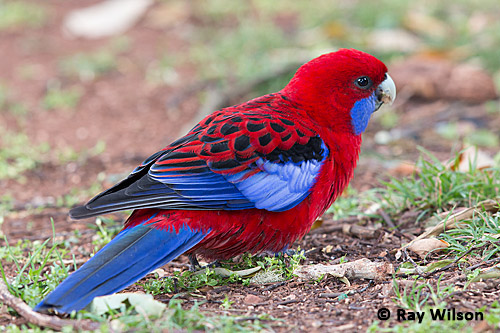
Crimson Rosella (Platycercus elegans)

Crimson Rosella (Platycercus elegans)
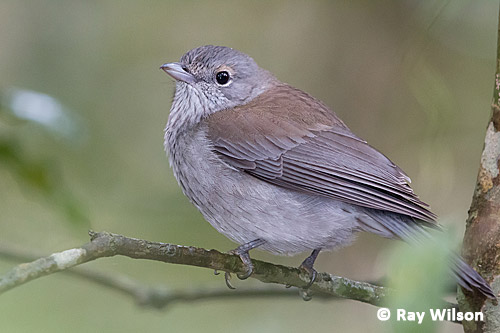
Grey Shrike-thrush (Colluricincla harmonica)
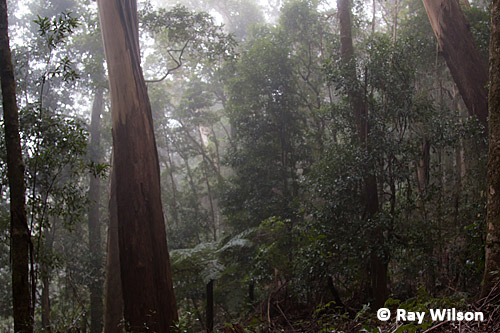
A misty morning in the humid mountain-top rainforest
The forest view above was pretty typical of the weather conditions during my entire stay on the mountain, although it did clear up a bit one evening (below).
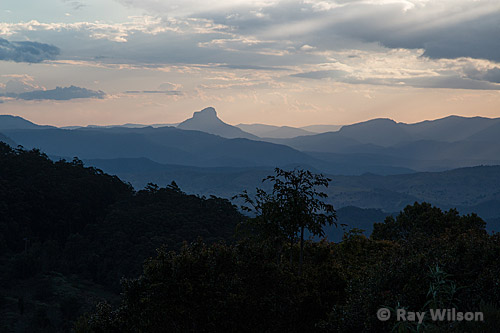
Lammington National Park at sunset
I had pre-booked a couple of pelagic seabird trips leaving from Wollongong, to the south of Sydney, before I left the UK, so since I had spent longer than I had anticipated exploring eastern Queensland I now had to drive non-stop from Lammington to Sydney in order to get there in time for the boat trips...a very long drive!
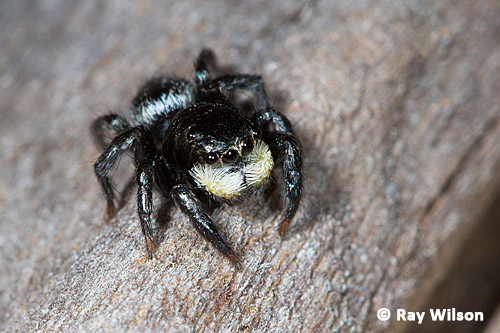
Jumping Spider (Salticidae)
I arrived in Sydney early on the Friday morning and spent the day searching unsuccessfully for Peacock Spiders at Ku-Ring-Gai Chase National Park and St Ives Wildflower Garden. The cute little jumping spider above was a small consolation, but nothing like as colourful or pretty as a Peacock Spider.
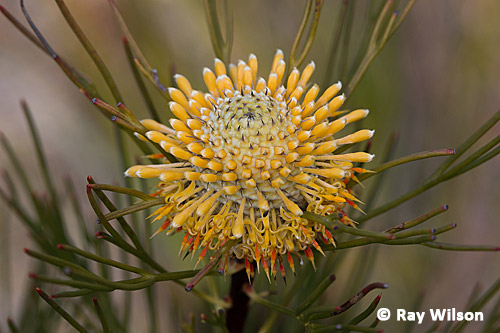
Narrow-leaf Drumsticks (Isopogon anethifolius)
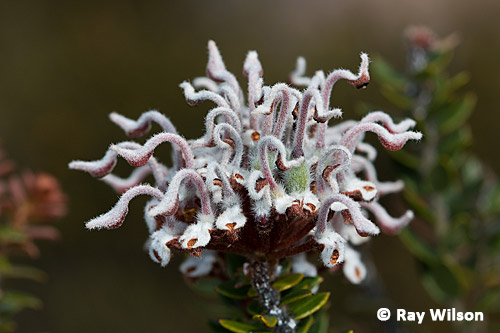
Grey Spider Flower (Grevillea buxifolia)
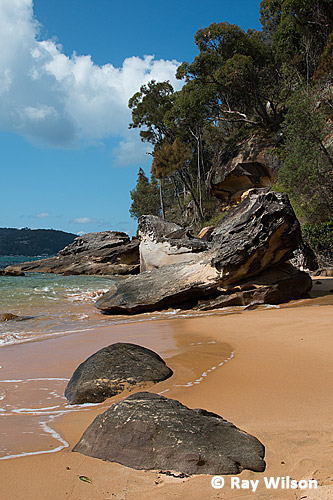
Ku-Ring-Gai Chase National Park
Ray Wilson owns the copyright of all images on this site.
They may not be used or copied in any form without prior written permission.
raywilsonphotography@googlemail.com